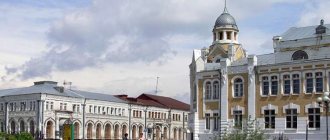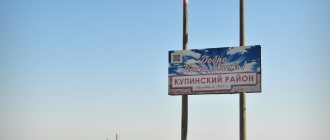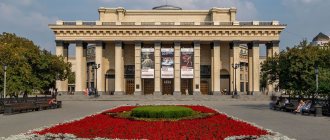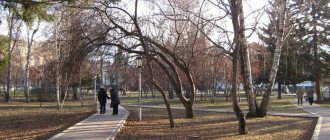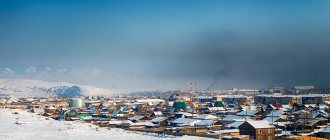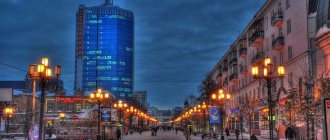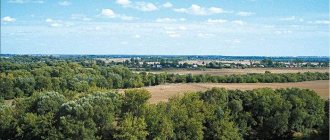Information for the opposition
The worst situation is with statistics. There have never been statistics in Russia independent of the executive branch. But in recent years the situation has become completely deplorable. I really hope that the set of problems of statistical adequacy that have come to the fore due to the pandemic will really draw attention to these problems. If only because in addition to demographic statistics, there are also economic and social statistics. And demographics don’t end with mortality rates.
The picture of the Russian economy and Russian society in comparable and measurable terms remains very vague. And that is why all forecasts that predict not a trend, but the degree of change in specific indicators, remain nothing more than projection, manipulation and visionary work.
Until there are fundamental changes in the model of governing the country and in the principles of decision-making, the only way out of this situation is the formation of a huge number of layers of the shadow state. This is the criminal world, the highest form of organization of which is organized crime, fused with state power. That is the mafia. This includes small and medium-sized businesses that have massively fallen into the tax shadow. This is the so-called “garage economy”, which every year forms an increasing share of jobs that are important precisely from the point of view of employment, and not from the point of view of the production of surplus product.
This includes the civil society of large cities, which not only plugs holes in the social sphere, but also takes on the function of identifying problems at the grassroots level. First of all, in the most mobile and closest to the body of society spheres of the urban environment, ecology, public transport, and municipal government.
The most important thing in this situation is the synthesis and primary analysis of the information necessary for making any decisions. In general, no matter how trivial it may sound, the most important problem is information.
It is no secret that regions in Russia in most cases are governed based on sociology. And the presidential administration and the Federal Security Service (FSO) also base most decisions not on statistics and reports that rise vertically, but on data from specific studies, regular samples of which have become an important factor in both Russian politics and simply information about the world. Whether as a result of this the governor will “fly away” or another predatory concession will come to the region - this is only the visible part of the iceberg.
For the Russian opposition, if it really wants to change something in the country’s governance system, it also needs reliable information about what Russian society is like and the real socio-economic processes in our country. Reluctance to delve into these problems, attempts to rely on a distorted personal information space in which “none of my friends voted for Putin,” using only the data presented by the current government - all turns any opposition into a complete zero, and its cognitive capabilities and the ability to act effectively is a minus.
Therefore, you need to understand what real Russia, Siberia, and the Novosibirsk region are like. Civil society, which is the only one capable of creating a productive opposition in Russia, has a goal in the near future to become smarter. And, most importantly, the authorities are more informed. Government decisions must be based on objective data. And not only on value patterns, sectarian faith, the effects of mass consciousness, agitation and propaganda.
This is exactly what happened at the start of Deng Xiaoping’s economic reforms in China, when very high-quality municipal statistics became not just the basis for decision-making by the authorities of the People’s Republic of China, which had abandoned the madness of communism, but the basis for making investment decisions for domestic and international business.
Know how the number and quality of the population changes at the lowest level, what the natural movement of the population and migration processes look like, how the gross domestic product changes, what volume of private investment is attracted and in what areas (especially in comparison with neighboring regions and municipalities). There is nothing more important than this for the future of the country. And the same level of importance can only be raised to the creation of inclusive institutions, the most important of which should be an independent court.
Demographics matter most
I propose to bring basic information about Russian society and its changes into a simple and understandable format. One of the elements should be normal visualization of these processes. The demography of any society is at the core of its life. And the dynamics of demographic processes (especially population movement, natural and migration processes, territorial movement of the population) is what becomes the basis for politics in a normal state and normal society. Including its most important segments - taxes and budget.
Novosibirsk found itself on the verge of incredible upheavals in terms of the distribution of resources and powers between the city and the region, in terms of government intervention in local government affairs. At this turning point, at the very beginning we must understand what was happening with the size and distribution of the population of the Novosibirsk region. And what place in the region does the regional center and the real, and not fictitious, and created on paper for cutting land, Novosibirsk agglomeration occupy? It is important to identify not only an intuitive trend, but also the degree of change in the size and distribution of the population.
As a first question, I would like to ask this: does the Novosibirsk region exist? The Novosibirsk region as a single space with similar processes and common interests. Moreover, they share common interests not only from the point of view of their lobbying before the federal center, but also from the point of view of decision-making and redistribution of resources within the region. And precisely in the territorial aspect.
As with any serious issue, a brief summary of the problems of methodology is indispensable.
When analyzing, people are used to simplifying reality. Especially with the help of systematization and grouping. The result is a simple and understandable quantized version of reality, which is used to describe the world around us.
Describing the socio-economic and socio-political aspects of life in Russia, in any case we are forced to operate with abstractions of one or another level of depth. For example, considering separately groups of cities, depending on population size.
But taking into account the fact that Russia is a very large country, and the territorial differences in the way and standard of living are extremely large, the most important task is to find an approach to fragmentation that would most help to describe and systematize processes at a territorial level. However, with the exception of a small portion of sociological and marketing research, the overwhelming majority of publications on these topics come down to various kinds of ratings of Russian regions, where we are forced to humbly accept each region as a single whole.
This approach also has a right to exist. But most often in practical use, such ratings very poorly reflect the real situation on the ground, if only because the regional index of key indicators represents the “average temperature in the hospital.” In each Russian region there are not only territories that differ in the degree of urbanization or remoteness from the regional center and main communications. But also because little-studied suburbanization processes are now taking place near large cities. And also because economic statistics broken down by municipalities are in an extremely rudimentary state.
In any case, the collection and visualization of primary statistics with a breakdown by municipalities is the first step towards analyzing the individual territories of each region, building a grouping based not on the administrative boundaries of agglomerations assigned from above, but on reality.
How the Novosibirsk region lost its population
The Novosibirsk region is one of the most vibrant and contrasting regions, where you can compare very interesting demographic processes in the field of urbanization, suburbanization and migration. The primary and simplest (basic) approach to studying demographic processes in the Novosibirsk region is a comparative approach to population changes in the post-Soviet period. Ideally, with a layout for municipalities.
Let's look at what has happened to the distribution of the population in the Novosibirsk region over the past three decades. The most effective way would be to take a look at the three most recent censuses (1989, 2002 and 2010) and municipal statistics as of January 1, 2020.
The situation is a little more complicated with the early post-Soviet period. Firstly, there is no easily accessible information with a breakdown of future municipalities. Secondly, the period 1989–2002 includes two completely different stages. The last Soviet years were still a period of the demographic explosion of the 80s and planned population movements. The period of the 90s was a time of demographic catastrophe. Therefore, the overall result in population change between the 1989 and 2002 censuses represents, to a large extent, compensation for population growth in 1989–1992 by the decline in 1993–2002.
If we look at the map that visualizes this result, we will see that in the 90s the population grew mainly only in rural areas, not too far from Novosibirsk and the suburban area. Cities and towns were in a greater crisis, the impact of which on the surrounding countryside was still being realized. Thus, in the Iskitimsky and Cherepanovsky districts, the population of only rural settlements grew - the population of Linev, Listvyansky, Dorogin, Cherepanov and Posevnaya fell.
On average, during this period, the population of the Novosibirsk region fell by about 2%, Novosibirsk - by almost 1%. The population of Berdsk or the Novosibirsk region grew by more than 10% (and Krasnoobsk grew slower than the village), Koltsov - by more than 20%. Overall, during this period, the population of the village of Gorny in the Toguchinsky district grew the most (by 30%).
Of all the regional centers, the population grew only in Severny, Ust-Tarka, Kupino, Kochenevo, Suzun, Kolyvan, Ordynsky, Maslyanin and Moshkovo. In other regional centers the population has fallen.
As for the rural areas remote from Novosibirsk, already during this period there was a tendency for the population to decline, the maximum scale of which was still in the Vasyugan zone (up to -20%) and Baraba (up to -15%). The Kulunda zone suffered less - on average no more than -10%.
In general, the 90s of the 20th century should be considered as a period of turning point and the beginning of new trends and processes, which, as it turned out upon further study of the problem, were fully realized, persisted throughout the first two decades of the 21st century and continue to operate to this day.
Great Panic of October 1941
0
Under the circumstances, this decision was quite logical. However, the beginning of its implementation provoked the famous “Moscow Panic of October 1941.” The first to rush to implement the decree were officials who tried to evacuate not only state property, but also personal property. The sight of the cars in which the party and state nomenklatura tried to escape to the east made a depressing impression on Muscovites. Leaving managers sometimes left neither responsible persons nor instructions on further actions. At the enterprises, workers were sent home, given a month's salary in advance. October 16, 1941 became the first and so far only day in history when the Moscow Metro stopped operating. It was being prepared for destruction if the city was occupied by the Germans. Other transport also worked intermittently.
0
Looking at the actions of the authorities, ordinary citizens also collected their belongings and fled from the city. The Ryazanskoye Highway and the Enthusiasts Highway were clogged with people and cars. It was almost impossible to get on trains and trains. Robberies have become more frequent on the streets. They attacked cars carrying property being taken out and stole food from stores. Some enterprise managers, taking advantage of the situation, tried to disappear with government money. Moscow was filled with rumors. In the absence of official information, someone said that German tanks were either in Odintsovo or already in the area of the Belorussky railway station. There were those who were preparing to greet the Nazis as “liberators.” It was possible to stop the panic only after the introduction of a state of siege in Moscow on October 20, 1941. The document, in particular, ordered that “violators of order should be immediately brought to justice and handed over to a military tribunal, and provocateurs, spies and other agents of the enemy calling for a violation of order should be shot on the spot.”
Suburbs are growing faster than cities
In the period between the 2002 and 2010 censuses, when the population of the Novosibirsk region fell by 1%, the following territorial and demographic processes can be safely identified:
1. The Novosibirsk agglomeration is taking shape in the region, determined both by the formation of a zone of continuous development of populated areas and by existing communications. The agglomeration extends from its core in petals in six directions, coinciding with highways (Horda and Kolyvan directions) or with highways and railways (western, eastern, Kuznetsk, southern directions).
2. In the Novosibirsk region, suburbanization is beginning to clearly manifest itself, when the population of suburbs (both satellite cities and rural areas) is growing faster than the population of urban cores. In the case of the Novosibirsk agglomeration, it looks like this: Novosibirsk, Ob, Krasnoobsk and most village councils of the Novosibirsk region - up to +10%, Berdsk, Tolmachevo, Krivodanovka, Kamenka, Kudryashi, Novolugovoe and Barlak - +10+25%, Mochishche and Koltsovo - up to +30%, and the population of Razdolnensky and Michurinsky village councils of the Novosibirsk region has grown by 60% over these eight years.
In the Kuibyshev-Barabinsk agglomeration the situation turned out to be even more interesting. While the population of both cities fell by 6–7%, the number of residents of some suburban village councils increased by 2–3%. A similar phenomenon can be seen in the Karasuk region.
3. Outside the Novosibirsk agglomeration, almost the entire territory of the region is experiencing significant depopulation and migration outflow. But unlike the previous period, the rate of population decline is higher in rural areas. In the vast majority of regions, the rate of population decline in village councils remote from regional centers and highways is on average three times higher than in regional centers.
4. The highest rate of population decline is in the Vasyugan zone, where all village councils in the north of the Kolyvan, Chulym and Ubinsk regions lost during this period from a quarter to a half of the population that had already decreased in the 90s. And the north of the Kyshtovsky district - even more than half of all people. The only exception is the North, where investments related to oil production date back to this period.
In the Barabinskaya zone and the Kulundinskaya zones, a very clear division is emerging - all regional centers have steadily lost up to 10% of the population, most of the rural areas - up to a quarter of the population, and municipalities remote from the highways - sometimes up to half in just this less than a decade. However, in general, the scale of the decline in the rural population in Baraba for each group of municipalities is on average approximately 1.5 times higher than in Kulunda.
Kuibyshev
(Novosibirsk region)
OKATO code:
50415
Founded:
1772
City since:
1782 City of district subordination (Kuibyshevsky district of the Novosibirsk region)
Center:
Kuibyshevsky district
The city was formerly called:
| Kainsk | 1782 | 1935 |
| Telephone code (reference phone) | |
| 38362***** | 21-2-30 |
Deviation from Moscow time, hours:
4
Geographical latitude:
55°27′
Geographical longitude:
78°18′
Altitude above sea level, meters:
110 Sunrise and sunset times in the city of Kuibyshev
Novosibirsk agglomeration, Suzun, Ordynsky district
At the next stage - in 2010–2020 - all these trends were fully preserved, although the scale changed somewhat. A temporary cyclical demographic boom and an increase in the number of migrants led to an increase in the population of the Novosibirsk region by almost 5% in this decade. And in many remote village councils the population had already decreased significantly, and therefore could not show the previous rate of decline.
The population of Novosibirsk grew by more than 10% in the second decade of the 21st century. The city of Ob, the majority of village councils of the Novosibirsk region, the east of Kochenevsky, the north of Iskitimsky and the southwest of Moshko districts added even more. Koltsovo, Krivodanovka, Mochishche, Michurinsky village council and Krasnoobsk added from a quarter to a half of the population. And the population of the Barlaksky village council of the Moshkovsky district and the Kamensky and Kamensky and Tolmachevsky village councils of the Novosibirsk district increased by more than 1.5 times.
Outside the central zone of the Novosibirsk agglomeration, Suzun and the coastal part of the Ordynsky district, practically the only municipality where the population has steadily increased over the last decade is the German village of Ivanovka in the Bagansky district, where the population has grown by more than 20% over 10 years.
Most of the rural municipalities of the Novosibirsk region lost up to a quarter of their population in 2010–2020. In some village councils in the north of the region and away from highways and regional centers there are even more. So, for example, this figure for the Pikhtovsky and Ponomarevsky village councils in the north of the Kolyvan region was -30-40% of the population.
The development and strengthening of demographic trends at the beginning of the 21st century is very well shown by a summary map showing changes in population for the period from 2002 to 2020.
If you look at the map, it is noticeable that a change in trends is practically not typical for all municipalities in our region. Where the population fell, it continues to fall, and where it grew, it continues to grow. Moreover, if we compile a general rating of municipalities based on changes in population over decades, then the majority of rural and urban settlements will retain their place. The only exception will be the village councils of the Novosibirsk region, where massive multi-storey housing construction is already beginning.
In order to properly pay attention to those territories of the Novosibirsk region where the population grew in this century, it is better to pay attention to the map, where only this category of municipalities is filled in.
“Due to the unfavorable situation”
0
See all photos in the gallery
By mid-October 1941, the situation in the Moscow direction of the Soviet-German front became critical. The offensive of the main forces of the German Army Group Center led to the encirclement of a group of Soviet troops near Vyazma. The immediate approaches to the capital were not covered by a sufficient number of troops. The threat of the fall of the capital of the USSR became more than real. On October 12, 1941, Kaluga fell. German units reached the lines located 150-200 kilometers from Moscow.
0
On October 15, the State Defense Committee of the USSR adopted Resolution No. 801 “On the evacuation of the capital of the USSR Moscow”: “In view of the unfavorable situation in the area of the Mozhaisk defensive line, the State Defense Committee decided: 1. Instruct Comrade Molotov to inform foreign missions that they evacuate to the city today. Kuibyshev (NKPS - Comrade Kaganovich ensures the timely supply of trains for missions, and the NKVD - Comrade Beria organizes their protection.) 2. Today evacuate the Presidium of the Supreme Council, as well as the Government headed by the Deputy Chairman of the Council of People's Commissars, Comrade Molotov (Comrade Stalin evacuated tomorrow or later, depending on the situation). 3. Immediately evacuate the People's Commissariat of Defense to the city of Kuibyshev, and the main group of the General Staff to Arzamas. 4. In the event of enemy troops appearing at the gates of Moscow, instruct the NKVD - Comrade Beria and Comrade Shcherbakov to blow up enterprises, warehouses and institutions that cannot be evacuated, as well as all electrical equipment of the metro (excluding water supply and sewerage). Chairman of the State Defense Committee of the USSR I. STALIN"
×
